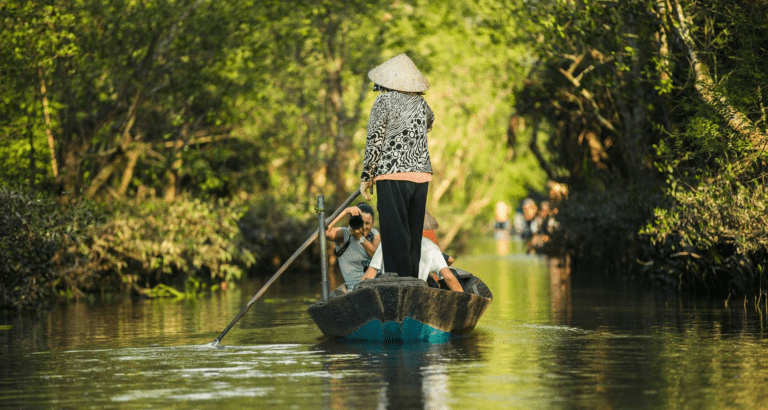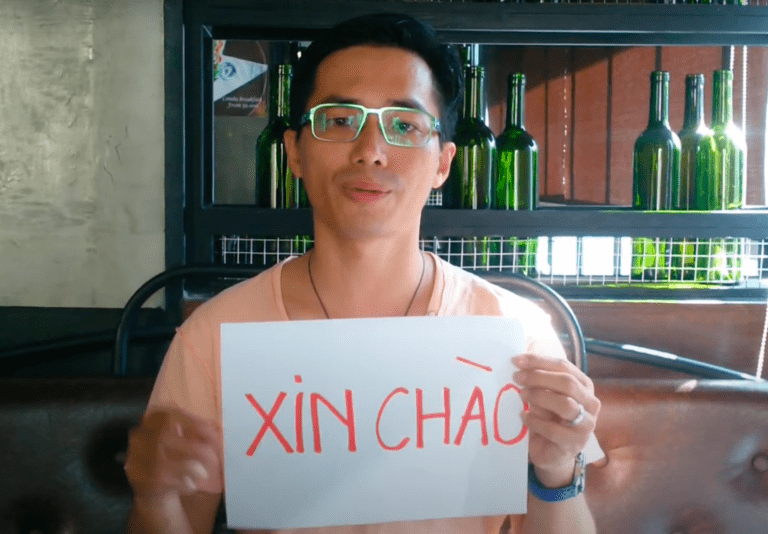Vietnam is a very popular destination for foreign tourists. Traveling to Vietnam will give you the chance to learn about Vietnamese culture, sample some delicious native cuisine, and take in the gorgeous scenery. Because there is a substantial contrast between daily life there and in your nation, preparation is crucial before a trip to Vietnam. Like everywhere else, there are a few things you should be aware of before traveling to Vietnam. Here are 10 tips to keep in mind as you prepare for your vacation in 2023–2014.
1. Acquire travel insurance
It is unquestionable that you must buy travel insurance before going anywhere, including Vietnam. It is regarded as the most crucial issue to watch out for when traveling to Vietnam in the years 2023–2024.
Although it is safe to travel to Vietnam, it is nevertheless important to be ready for unexpected events. You could accidentally suffer from the trip if you acquire food poisoning, get hurt while participating in an activity, or even miss your departure.
Unexpected things happen in life, so make sure you prepare travel insurance to safeguard yourself!
2. Acquire a visa for Vietnam
Except for citizens of 24 countries who benefit from bilateral or unilateral visa waiver arrangements by the Vietnamese government, most tourists with popular passports currently require a visa to enter Vietnam.
Currently, there are 3 methods for requesting a visa to Vietnam:
- Apply for a Vietnam visa at the Vietnamese Embassy
- Apply for Vietnam visa on arrival
- Sign up for Evisa.
The first choice, a Vietnam embassy visa, is the standard one. Under this option, travelers must typically prepare the necessary paperwork in advance, visit the Vietnam embassy or consulate office to submit it and pay the visa cost, and then return to pick up their visa. Both tourists and business travelers who are visiting Vietnam temporarily or permanently may choose to use this option.
The second option – Vietnam visa on arrival – is a popular choice among travelers coming to Vietnam by air only at the moment. Many visitors choose it since it is convenient (apply online, no need to travel to submit documents), easy (no documentation is needed for the application), time-saving, and suitable for applications made at the last minute (same day, only 2-4 working hours processing). Both business and pleasure tourists, staying in Vietnam for short or extended periods of time, have access to this option.
The third alternative, the Vietnam e-visa, is the most recent (as of February 2017). It is only available to citizens of 46 countries, and it is only suitable for short-term (1 month) tourist visas. There are 28 international border gates through which travelers can enter Vietnam.
3. Purchase a local SIM card
There are numerous possibilities for buying a SIM card when you arrive in Vietnam and land at Tan Son Nhat in Ho Chi Minh City or Noi Bai International Airport in Hanoi. You will be glad to know that SIM cards are available in many retailers in Vietnam for about 100,000 VND, even if you miss shopping at the airport. Find a service that offers Mobifone, Viettel or Vietnamobile phones.
4. Learn to say “Hello” and “Thank you” in Vietnamese
You speak English and have no experience with Vietnamese? Don’t worry, many locals speak good English, especially in tourist areas.
Still, it can be challenging to find English-speaking people in Vietnam’s outlying regions. As a result, it is important to note that you should try learning a few fundamental Vietnamese words, such as “Hello is “Xin chào” (pronounced xin chow) and Thank you is “Cảm ơn” (pronounced gahm un) for express your friendliness.
5. Keep in mind the Vietnamese currency
Vietnam’s national currency is the dong, or VND as it is popularly known. At the moment, the currency rate is 1 USD = 24,873 VND or 1 EUR = 24,703.86 VND.
The variety of money currencies in Vietnam makes it quite likely that someone will be confused because some currencies resemble others. The 20,000 VND is the same shade of blue as the 500,000 VND, for instance. You must keep in mind the color of each cash and double-check each one before utilizing it. These are some notes of Vietnamese cash for you to remember:
- Yellow: 10,000 VND
- Light blue: 20,000 VND
- Light red: 50,000 VND
- Green: 100,000 VND
- Turquoise: 500,000 VND
6. Recognize and avoid scams
Avoiding scammers is one of the most crucial travel tips for Vietnam. Unfortunately, there are plenty of people out there who deceive a lot of people every day. They are very common in Vietnam, and even more so in popular tourist destinations like Hanoi and similar places.
Undoubtedly, no tourist enjoys being victimized and ripped off. Therefore, do your best to avoid it if you really don’t want to feel hungry or sour at some time while on your trip. It is hard, but not impossible. Here are the best ways you can avoid the scams and truly enjoy your trip
- Fake taxis:
The usual procedure is as follows: as soon as you exit the airport, these bogus cabs will be waiting for you to board them. If you’re unfamiliar with the city, the driver can also take a circuitous route to raise the cost even more.
Simply using Grab and keeping your GPS on all the time will ensure that they are taking you on the shortest route is the best course of action for avoiding this fraud. If you must use an airport taxi, though, make sure to opt for reputable names like Mai Linh Taxi or Vinasun Taxi. These companies’ drivers must constantly be in a uniform, and the interior of the vehicle must prominently show their photo.
- Pricing Scams
Verify the pricing before accepting it when committing to purchase something. For instance, they can try to bill you in a different currency (like the US Dollar! ), or they might raise the price. Say “dong” if you think the price is in Vietnamese currency before using a service or making a purchase. To show you the final amount, some store owners may enter the figures into a calculator.
Despite the fact that there are wicked individuals out there, Vietnam is still a lovely, kind, and welcoming nation. While being ready for unpleasant circumstances is a good idea, don’t let it get in the way of your enjoyment of making friends with people and learning about the country’s rich culture.
7. Discover how to haggle quickly
You can be in for a real treat if this is your first time visiting Vietnam! Everything is incredibly cheap, and haggling is commonplace in marketplaces and shops. It’s even enjoyable. You get to know their people better and discover what lovely individuals they are.
But you need to be aware of something. There will be a sudden increase in prices for you as a foreigner. They will assume, based on your hometown, that you have good financial status and are unaware of Vietnam’s market rates. If you don’t want to be ripped off in Vietnam, haggle prices! It is customary to haggle, so do not be averse to doing so when you are shopping.
Although it may seem like unnecessary work, the small amount of extra change you get to retain for yourself can come in handy later on in your tour
Here is an option you can take in consideration. In the beginning, you can make an offer that is 20–30% below the original offer, spend around 10–15 minutes convincing, and be prepared to leave if you don’t obtain the price you desire. Attempt to strike up conversations with a few nice people as well. They will inform you of the current prices so that you may appropriately haggle. One more thing: Showing off your newest, flashiest iPhone 13 Pro Max or wearing a fancy watch is not appropriate. These minute details have a significant impact on both the first pricing you receive and the final amount you pay.
8. Tip is not common in Vietnam
Extra tipping is not extremely common in Vietnam, in contrast to the paying culture of Western nations. You do not really need to tip the staff at an excellent restaurant or bar if you are there. Even if you want to go out to a luxury meal or a flashy restaurant, just be aware that the cost of a fancy service is already factored into the total cost of your visit. And since they are only supposed to accept the money listed on the bill, the servers here will not give you a frightful look if you leave no tips. There is no need to worry because you simply need to spend what you wish. The majority of people, especially their countrymen, don’t tip them either!
9. Be careful when crossing the street in Vietnam.
There are many different types of automobiles on the Vietnamese streets, especially in the larger cities like Ho Chi Minh City and Hanoi. Because accidents happen often, many foreign visitors are afraid to cross the street.
The simplest technique to ensure your safety when crossing the street is to stand close to a local who is doing so. A number of people will be in the street, so you can also form a small group and cross it.
10. Vietnam sometimes experiences unpredictable weather.
The climate in Vietnam is tropical. You should pack proper clothing for the summer because it will be very hot outside, such as t-shirts, skirts, and sunglasses. If you visit during the winter, bring a warm coat because it gets very cold in the North of Vietnam.
Be ready for the weather because Ho Chi Minh City frequently experiences hot weather. When visiting Ho Chi Minh City, you should always pack an umbrella because the city experiences both sunny days and occasional downpours.
This is a fantastic post that provides information on the weather and the best times to visit Vietnam to enjoy the sun, rain, or cold.
To conclude, these are 10 amazing tips you need to take notes whenever coming to Vietnam, as these will make your journey be much more comfortable and enjoyable in these lovely countries. Being more alert is absolutely vital, but please do not let that stop you from having fun with the locals and experiencing the country’s unique cultures.


